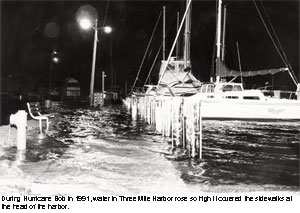A Protest Against Ferry Parking
A Protest Against Ferry Parking
The growth of the Cross Sound Ferry business in Orient, and the increased traffic generated by those getting on and off the ferries, which travel to Connecticut and back, has prompted a North Fork citizens' group to plan a protest rally for Labor Day.
Members of Take Back Our Roads!, a coalition of the North Fork Environmental Council, the Orient Association, and Southold Citizens for Safe Roads, as well as other concerned members of the public, will meet at 10:30 a.m. in a field near the ferry terminal, just to the west of the Orient State Park entrance.
The group is making several "demands," including that New York State Gov. George E. Pataki and "others in a position of authority immediately press for new ferry terminals in East Hampton and Brookhaven," according to a newspaper advertisement for the protest.
The group believes that most of the people who use the ferry are coming from and going to South Fork and other Long Island locations and that new terminals would decrease the traffic through Southold.
The Towns of Southold and Shelter Island, along with the Cross Sound Ferry, filed suit against East Hampton Town last fall, seeking to overturn a town law banning vehicle ferries and high-speed passenger ferries. A federal court judge is reviewing motions submitted by both sides in that lawsuit.
The East Hampton law, which prohibits vehicle ferries and high-volume fast ferries for passengers, was enacted in 1997. It was based on a traffic study that showed that instituting such services would lead to traffic problems as severe as those that Southold is now experiencing.
In recent weeks, Southold Town Supervisor Josh Horton, citing heightened national security concerns in the wake of the terrorist bombings at underground train stops in London, which prompted the state to post National Guard troops at ferry and rail terminals, including Orient Point, has declared an ongoing state of emergency at the Cross Sound Ferry Terminal.
The declaration allowed the ferry company to use residentially zoned land for parking. By parking cars further from Route 25, the National Guard and town police would be able to conduct random searches of vehicles on line to board the ferry more easily, Mr. Horton said. Mr. Horton's actions prompted protests in front of Southold Town Hall.
The use of the land for parking has been under dispute. The ferry company had asked that the land be changed from residential to waterfront-commercial zoning, which could allow construction of more docks and expansion of its operations. But the Southold Citizens for Safe Roads petitioned against the zone change, and the ferry company's request was denied by the town board.
A Cross Sound Ferry spokesman, Stan Mickus, said yesterday that the company has been talking with law enforcement and emergency officials regarding the planned rally on Monday and is "looking to minimize any disruption in service that day."
"We serve the traveling public of Long Island," he said, "and we want to ensure the safety of our passengers."
Among the demands made by Take Back Our Roads! is that Southold Town enforce its ban on parking on the residentially zoned site and levy fines for violations, and that the New York State Department of Transportation ban parking on both sides of state Route 25 within a half-mile of the ferry terminal. The ferry company, the group says, should be forced to limit its volume of customers to those it can accommodate in its present parking lot, for which, they say, reservations should be taken.
According to the group, Cross Sound operates up to 46 ferries daily, during a 17-hour period, including a passenger-only fast ferry that was designed to transport gamblers to and from Connecticut casinos.

